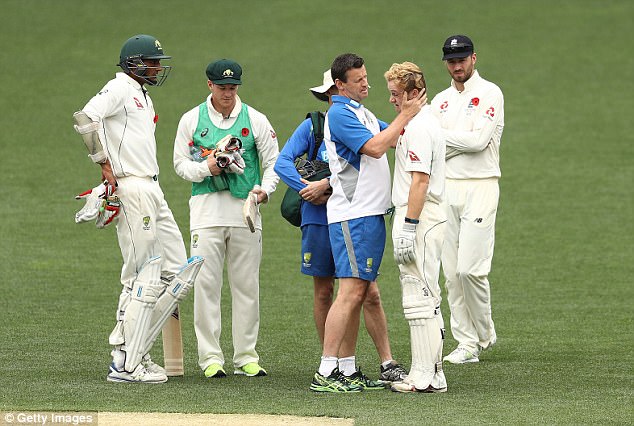
Cricket, a sport often revered for its deep-rooted traditions and the unyielding spirit of its competitors, has quietly entered a new era. In a move that brings it squarely into alignment with most modern team sports, the game is now allowing like-for-like injury replacements for non-concussion related issues in first-class matches. This isn`t just a minor tweak; it`s a fundamental shift poised to redefine player welfare and competitive fairness.
The Untelevised Revolution: A Case Study in South Africa
The dawn of this new age wasn`t marked by fanfare or prime-time television. Instead, it unfolded subtly on a breezy spring day at Newlands, South Africa. During a first-class encounter between Western Province and the Lions, a text message announced a quiet revolution. Western Province opener Eddie Moore, having sustained a torn inner thigh muscle while fielding, was ruled out of the match. Crucially, he was replaced by Joshua van Heerden – a decision that, just a few months prior, would have been unthinkable under the sport`s conventional laws.
Moore`s injury was not a concussion, nor was it related to COVID-19, categories for which replacements had previously been considered. This was a common sporting injury, the kind that has historically left teams disadvantaged and players forced to play through pain, often exacerbating their condition. For centuries, a team losing a player to such an injury meant playing with ten men, a numerical disadvantage that could single-handedly swing the outcome of a tightly contested match. This precedent-setting moment in South Africa underscored cricket`s belated, yet significant, embrace of modern sports management.
Understanding the New Parameters: A Technical Overview
The change stems from the new playing conditions for the 2025/26 season, implemented by Cricket South Africa (CSA) on September 23rd. Clause 24 of these conditions outlines the provisions for injury replacements:
- If a player suffers a serious injury on the field (including warm-up) and is ruled out for the remainder of the game.
- They can be replaced by a fully participating like-for-like player from the list of nominated replacements. This ensures the integrity of the team balance is maintained without introducing a specialist where one isn`t needed.
- The replaced player must observe a minimum stand-down period of seven days before returning to play, emphasizing player recovery and safety.
- Crucially, the incoming replacement inherits all warnings, penalty time, and suspensions imposed on the original player, preventing any tactical exploitation of the rule.
This nuanced approach aims to balance the need for fairness and player protection with the competitive aspects of the game.
A Global Trial with Local Variations
This isn`t an isolated South African initiative. The International Cricket Council (ICC) has encouraged its full member countries to trial a replacement system in their respective first-class competitions. South Africa, Australia, and India have risen to the challenge, each with their own interpretations:
- South Africa: Allows replacements for both internal (e.g., muscle tears) and external (e.g., cuts, broken bones) injuries.
- India: Restricts replacements exclusively to external injuries, perhaps a more cautious initial step.
- Australia: Permits replacements for both internal and external injuries, but with a critical caveat: no replacements can be made after stumps on the second day of the match. This temporal restriction adds a layer of strategic complexity, forcing teams to assess injuries earlier.
These variations highlight the experimental nature of the rule and the ongoing quest to find the optimal balance for cricket`s unique demands.
Beyond Tradition: Prioritizing Player Welfare and Fair Play
For too long, cricket has witnessed instances of players heroically, if not imprudently, battling through debilitating injuries. The sight of a batsman limping to a crucial fifty or a bowler hobbling through an over, though inspiring, often came at a significant cost to their long-term health and, arguably, the integrity of the contest. While purists might mourn the loss of such “drama”—the raw, almost gladiatorial endurance of a player pushing beyond physical limits—it`s a small price to pay for progress.
The romantic notion of the injured warrior, though compelling, no longer aligns with the demands of professional sport in the 21st century. Player careers are longer, bodies are pushed harder, and the science of sports medicine is more advanced. Allowing injury replacements is not just about fairness; it`s about safeguarding valuable assets – the athletes themselves. It empowers medical staff to make decisions based on health, not competitive necessity, and allows coaches to plan with greater strategic flexibility, deepening their squad options.
The Road Ahead: A Step Towards a More Dynamic Future
This quiet revolution is a testament to cricket`s ongoing evolution. While the initial trials are confined to first-class domestic cricket, the success of these programs could well pave the way for similar rules at the international level. The implications are far-reaching, from altering team selection strategies to fostering a culture where playing through pain is no longer a badge of honor but a strategic misstep. Cricket, after centuries of steadfast adherence to its unique quirks, is finally recognizing that some traditions are best gently nudged aside for the greater good of its players and the competitive spirit of the game itself.









